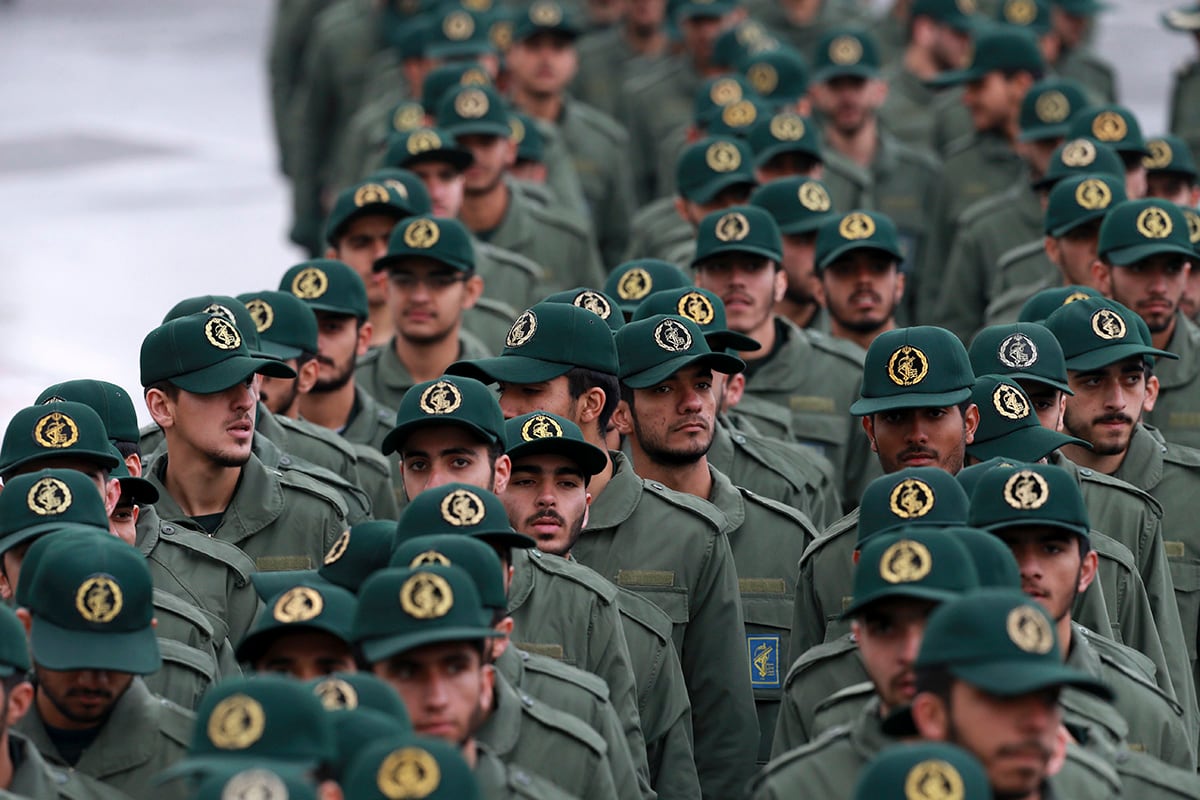Iran has shown its ability to deploy forces and air assets beyond its borders in support of allies across the Middle East in the wake of civil wars that have destabilized the region, according to a defense intelligence report on Iran’s military capabilities.
The report titled “Iran Military Power” was produced by the Defense Intelligence Agency and released on Tuesday.
The report described Iran’s ability to flex its forces beyond its borders as “limited” but Iran is heeding lessons learned from conflicts in Syria, Iraq and Yemen where its forces are combating ISIS militants and propping up proxy forces in the region.
Iran has also conducted “limited out-of-area naval operations as far as China, South Africa, and the Mediterranean Sea,” according to the report.
RELATED

Iran is also seeking to increase its support of UN international peacekeeping operations as a means to build legitimacy and potentially to “develop expeditionary-like capabilities through operations other than war,” the report reads.
Iran’s ability to rapidly move expeditionary forces and conduct combined operations across the large swath of the Middle East threatens U.S. forces in the region and bolsters Iran’s desire to showcase itself as the regional dominant power while stymieing American interests.
“It has shown itself capable of sending small groups of conventional forces — including ground forces, military airlift, and UAV operators — into permissive allied countries to support larger operations,” the report reads.
“Iran’s military has also revised professional military education to emphasize lessons learned from operations in Syria and Iraq, where it also has gained its first experience conducting combined operations with allied military forces,” the report detailed.
Much of Iran’s expeditionary capabilities developed as Iran reacted to chaotic events and civil wars raging across the region following America’s withdrawal from Iraq in 2011.
“Since the outbreak of the Syrian civil war in 2011, Iran has become increasingly involved in regional conflicts, with varying levels of military intervention in Iraq, Syria, and Yemen,” the report detailed.
Iran began sending military advisers to Iraq in 2014 to help combat ISIS and to keep Baghdad from fragmenting, according to the DIA report.
In Yemen, Iran has provided sophisticated weapons systems to Houthi rebels that did not exist in the Shia rebel group’s arsenal prior to the collapse of the Yemen government.
Iranian missiles and explosive boat technology have found their way into the hands of the Yemen-based Houthis.
Houthi’s claimed responsibility for the mid-September attack on two Saudi Arabian oil fields. The U.S. has fingered Iran as culpable for the Saudi attack.
A U.S. State Department brief obtained by Military Times highlighted that a mix of drones and land attack cruise missiles were used in the strike that shuttered nearly 6 percent of the gloabal oil supply.
The brief didn’t detail specifically what type of cruise missile or drones impacted the Saudi oil facilities, but it included two photos of the Iranian land-attack cruise missile, known as the Soumar, and the Quds-1 missile.
“Iran also uses the IRGC-QF [Islamic Revolutionary Guard Corps-Quds Force] to provide varying levels of support to Shia groups in Bahrain, some Palestinian militant groups, and the Taliban in Afghanistan,” the report detailed.
The Quds forces is an Iranian paramilitary organization under the command of Maj. Gen. Qassem Soleimani. The groups is tasked with exporting Iran’s 1979 revolution.
The DIA report follows an explosive story from the New York Times that reported leaked Iranian intelligence cables spotlighting the level of Iranian interference in intrusion into Iraq’s government and Tehran’s control over America’s partner in the Middle East. The Intercept also obtained the leaked cables.
The report also noted that Iran maintains regular rotations of deployed navy groups to the Arabian Sea, Gulf of Aden and “sometimes” the Indian Ocean.
But the report also detailed that the Iranian naval deployments are often symbolic to showcase force projection and that Iranian ships are often plagued with maintenance issues.
Shawn Snow is the senior reporter for Marine Corps Times and a Marine Corps veteran.
